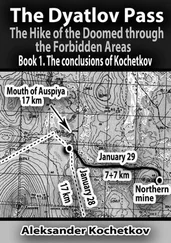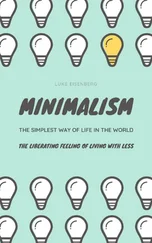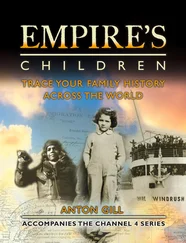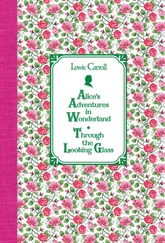Holmgren, F. 1878. Die Farbenblindheit in ihren Beziehungen zu den Eisenbahnen und der Marine. Leipzig: F. C. W. Vogel.
Humboldt, W. 1820. Über das vergleichende Sprachstudium in Beziehung auf die verschiedenen Epochen der Sprachentwicklung. In Leitzmann 1905, 1-34.
– -. 1821a. Versuch einer Analyse der mexikanischen Sprache. In Leitzmann 1905, 233-84.

– -. 1821b. Über das Entstehen der grammatischen Formen und ihren Einflu auf die Ideenentwicklung. In Leitzmann 1905, 285-313.
– -. 1827. Ueber die Verschiedenheiten des menschlichen Sprachbaues. In Wilhelm von Humboldt: Werke in fünf Bänden. Vol. 3. Darmstadt, 1963.
Institute of Transportation Engineers, 2005. Vehicle traffic control signal heads-Light emitting diode (LED) circular signal supplement. Washington, D.C.
Jacobs, K. W., and F. E. Hustmyer. 1974. Effects of four psychological primary colors on GSR, heart rate, and respiration rate. Perceptual and Motor Skills 38:763-66.
Jakobson, R. O. 1959a. On linguistic aspects of translation. In On translation , ed. R. A. Brower, 232-39. Cambridge: Harvard University Press.
– -. 1959b. Boas’s view of grammatical meaning. In The anthropology of Franz Boas: Essays on the centennial of his birth , ed. W. Goldschmidt, 139-45. Memoirs of the American Anthropological Association 89, Menasha, WI.
– -. 1972. Language and culture. Lecture delivered in Tokyo on July 27, 1967. In Roman Jakobson. Selected Writings , ed. S. Rudy, 7:101-12. Berlin: Mouton, 1985.
Janoff, M. S. 1994. Traffic signal visibility: A synthesis of human factors and visual science literature with recommendations for required research.” Journal of the Illuminating Engineering Society 23 (1):76-89.
Jespersen, O. 1955. Growth and structure of the English language. 9th ed. Garden City: Doubleday.
Jooken, L. 2000. Descriptions of American Indian word forms in colonial missionary grammars. In The language encounter in the Americas, 1492-1800, ed. E. G. Gray and N. Fiering, 293-309. New York: Berghahn.
Kaiser, P. K., and R. M. Boynton. 1996. Human color vision . 2nd ed. Washington: Optical Society of America.
Kant, I. 1768. Von dem ersten Grunde des Unterschiedes der Gegenden im Raume. Vorkritische Schriften II. 1757-1777. Das Bonner Kant-Korpus (http://korpora.org/kant/).
Kay, P., and W. Kempton. 1984. What is the Sapir-Whorf hypothesis? American Anthropologist 86:65-79.
Kay, P., and L. Maffi. 1999. Color appearance and the emergence and evolution of basic color lexicons. American Anthropologist 101: 743-60.
Kay, P., and T. Regier. 2006a. Color naming universals: The case of Berinmo. Cognition 102 (2):289-98.
– -. 2006b. Language, thought, and color: Recent developments. Trends in Cognitive Sciences 10:51-54.
Keenan, E. L., and E. Ochs. 1979. Becoming a competent speaker of Malagasy. In Languages and their speakers, ed. T. Shopen, 113-58. Cambridge: Winthrop.
Keller, J. 1883. Lazarus Geiger und die Kritik der Vernunft. Wertheim am Main: E. Bechstein.
Koerner, E. F. K. 2000. Towards a “full pedigree” of the “Sapir-Whorf hypothesis”: From Locke to Lucy. In Explorations in Linguistic Relativity , ed. M. Pütz and M. H. Verspoor, 1-23. Amsterdam: John Benjamins.
Komarovaa, N., K. Jameson, and L. Narensc. 2007. Evolutionary models of color categorization based on discrimination. Journal of Mathematical Psychology 51 (6):359-82.
Konishi, T. 1993. The semantics of grammatical gender: A cross-cultural study. Journal of Psycholinguistic Research 22:519-34.
Köpcke, K., and D. Zubin. 1984. Sechs Prinzipien für die Genuszuweisung im Deutschen: Ein Beitrag zur natürlichen Klassifikation. Linguistische Berichte 93:26-50.
Krause, E. 1877. Die Geschichtliche Entwickelung des Farbensinnes. Kosmos 1:264-75.
Kroeber, A. 1915. The Eighteen Professions. American Anthropologist 17:283-89.
Kuschel, R., and R. Monberg. 1974. “We don’t talk much about colour here”: A study of colour semantics on Bellona Island. Man 9:213-42.
Lamarck, J.-B. P. A. 1809. Philosophie zoologique, ou Exposition des considérations relatives à l’histoire naturelle des animaux . Vol. 1. Rpt. Brussels: Impression Anastaltique, 1970.
Lambert, W. G. 1960. Babylonian Wisdom Literature . Oxford: Oxford University Press.
Latacz, J. 2004. Troy and Homer: Towards the solution of an old mystery. Oxford: Oxford University Press.
Laughren, M. 1978. Directional terminology in Warlpiri. Working Papers in Language and Linguistics 8:1-16.
Lazar-Meyn, H. A. 2004. Color naming: “Grue” in the Celtic languages of the British Isles. Psychological Science 15 (4):288.
Leitzmann, A. 1905. Wilhelm von Humboldts Gesammelte Schriften. Herausgegeben von der Königlich Preussischen Akademie der Wissenschaften. Vol. 4. Berlin: B. Behr’s Verlag.
Le Laboureur, L. 1669. Avantages de la langue françoise sur la langue latine. Paris: Guillaume de Luyne.
Lévi-Strauss, C. 1968. Structural anthropology . London: Allen Lane.
Levinson, S. C. 2000. Yélî Dnye and the theory of basic color terms. Journal of Linguistic Anthropology 10:3-55.
– -. 2003. Space in language and cognition: Explorations in cognitive diversity . Cambridge: Cambridge University Press.
Levinson, S. C., S. Kita, D. B. M. Haun, and B. H. Rasch. 2002. Returning the tables: Language affects spatial reasoning. Cognition 84:155-88.
Levinson, S. C., and D. P. Wilkins, eds. 2006. Grammars of space . Cambridge: Cambridge University Press.
Lewis, D. 1976. Observations on route findings and spatial orientation among the aboriginal peoples of the Western Desert Region of Central Australia. Oceania 46:249-79.
Li, P., and L. Gleitman. 2002. Turning the tables: Language and spatial reasoning. Cognition 83:265-94.
Li, P., L. Abarbanell, A. Papafragou, and L. Gleitman (forthcoming). Spatial reasoning without spatial words in Tenejapan Mayans. Unpublished ms.
Lindsey, D. T., and A. M. Brown. 2002. Color naming and the phototoxic effects of sunlight on the eye. Psychological Science 13 (6):506-12.
Lizot, J. 1971. Remarques sur le vocabulaire de parenté Yanõmami. L’Homme 11:25-38.
Locke, J. 1849 [1690]. An essay concerning human understanding . 30th ed. London: William Tegg.
Loos, N. A. 1978. The pragmatic racism of the frontier. In Race Relations in North Queensland , ed. H. Reynolds. Townsville: James Cook University.
Lupyan, G., and R. Dale. 2010. Language structure is partly determined by social structure. PLoS ONE 5(1):e8559.
Lyons, J. 1999. Vocabulary of color with particular reference to ancient Greek and classical Latin. In The language of color in the Mediterranean , ed. A. Borg, 38-75. Stockholm: Almqvist and Wiksell.
Maclaury, R. E. 1997. Color and cognition in Mesoamerica: Constructing categories as vantages. Austin: University of Texas Press.
Maddieson, I. 1984. Patterns of sounds. Cambridge: Cambridge University Press.
– -. 2005. Vowel quality inventories. In Haspelmath et al. 2005.
Magnus, H. 1877a. Die Entwickelung des Farbensinnes. Jena: Hermann Dufft.
– -. 1877b. Die geschichtliche Entwickelung des Farbensinnes. Leipzig: Veit.
– -. 1877c. Zur Entwickelung des Farbensinnes. Kosmos 1:423-32.
– -. 1880. Untersuchungen über den Farbensinn der Naturvölker . Jena: Gustav Fischer.
Читать дальше












